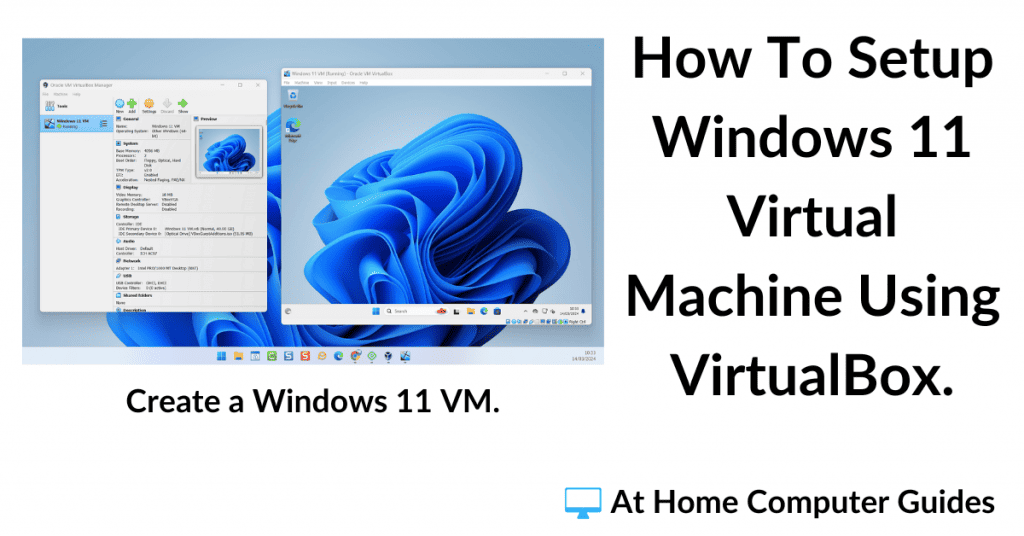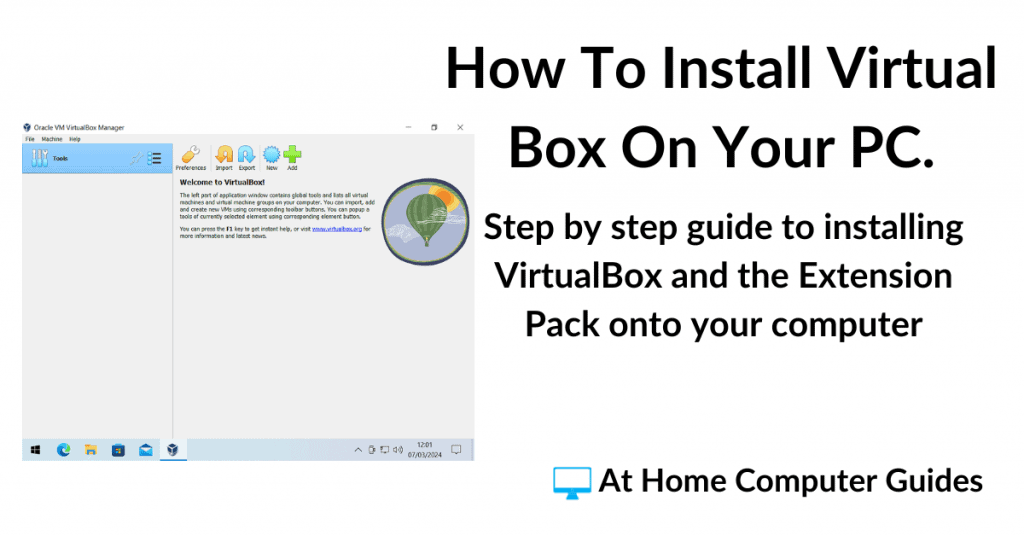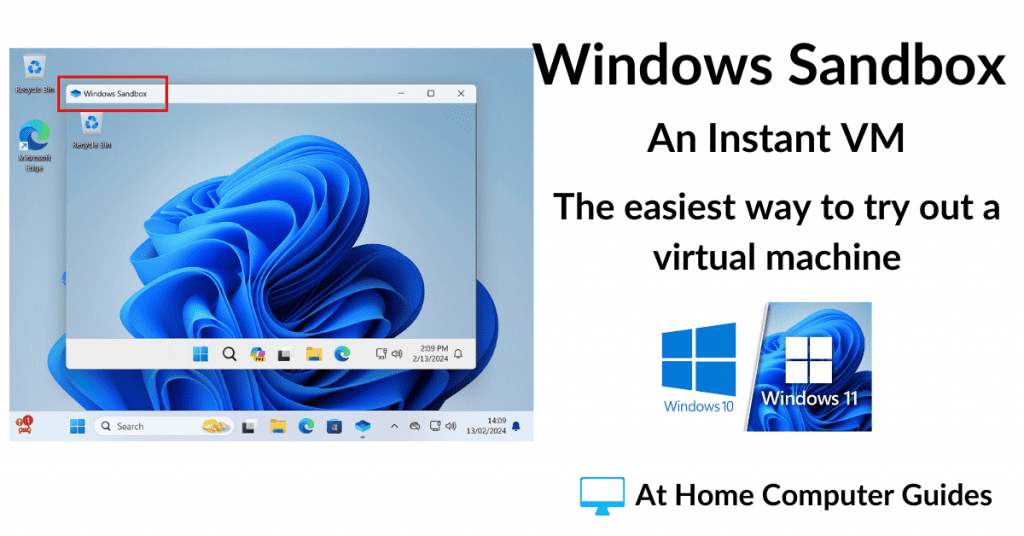To open a file, any file regardless of what it is, you’d normally just find it and then double left click on it. Simple enough, right. But how do you open files when you’re already using a program or application?
Previously we looked at saving files, so now we need to look at opening them.
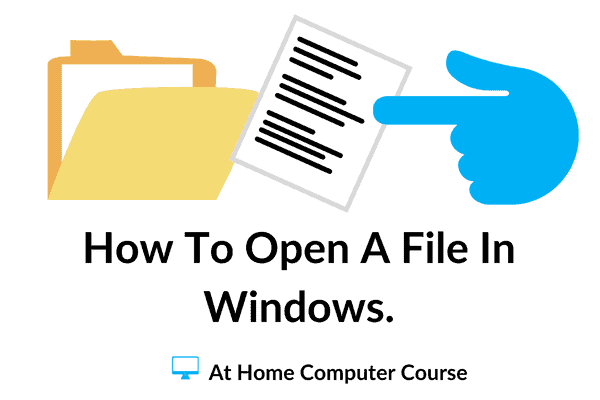
Open A File From Within A Program Or App.
You’ve got a program already running, perhaps you’ve been working on a similar file type. Now you want to open another file.
In the example below I’ll be using Notepad again, but the process will be exactly the same for most programs/apps.
From within the program, click on the File button which is usually in the top left corner.
On the menu that appears, left click on Open.
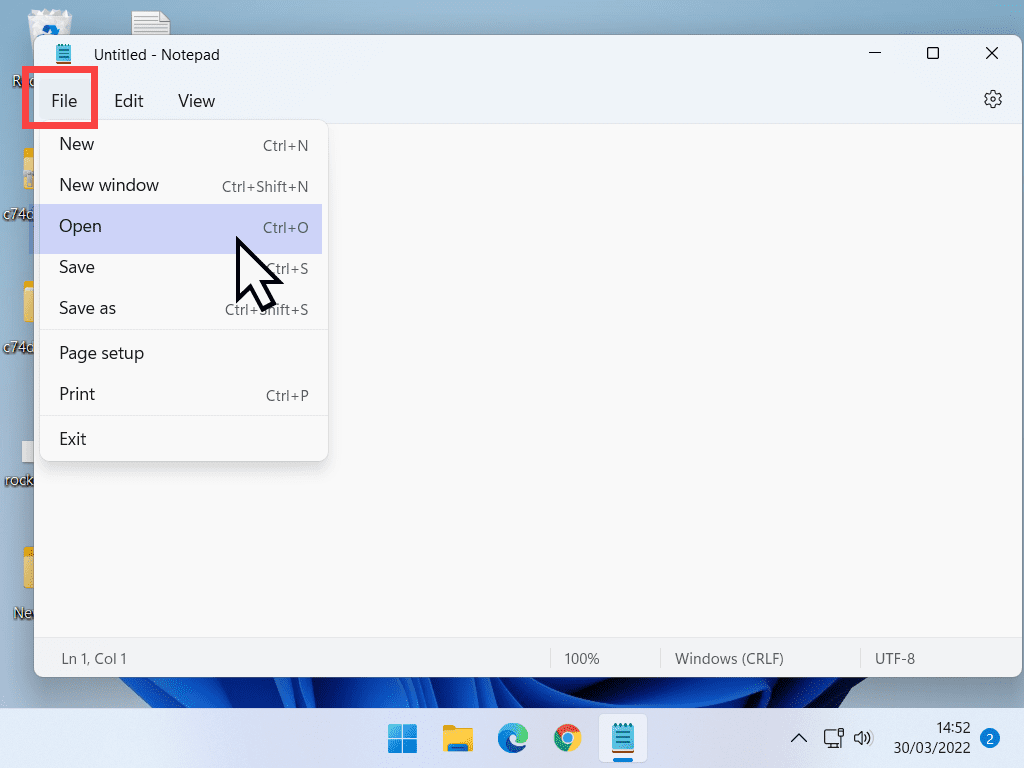
Use The Keyboard Shortcut.
In most (if not all) programs and apps, there is also a keyboard shortcut that you could use instead of clicking the File button.
Press the CTRL key and the letter O on your keyboard at the same time.
Be sure you’re using the letter O and not the number zero
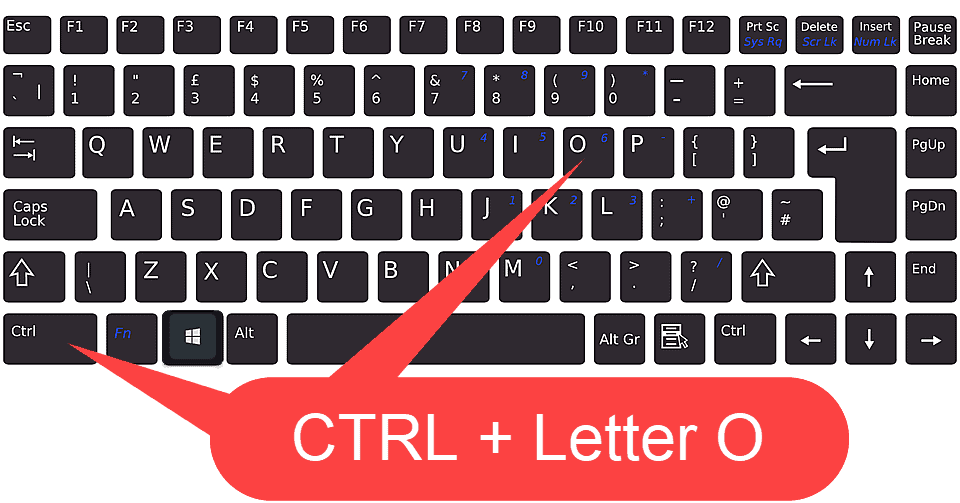
The Open File Dialogue Box.
Whichever way you chose, the Open File Dialogue Box will appear and while it can look intimidating it’s just another incarnation of File Explorer.
- At the top of the window, you’ll see the Address Bar, which tells you which folder you’re in right now.
- On the left is the Navigation Panel (or pane), which you use to jump between your main folders.
- The middle (or centre) panel shows the contents of the folder you’re currently in
- And finally, at the bottom of the window, you’ll see the File Name box.
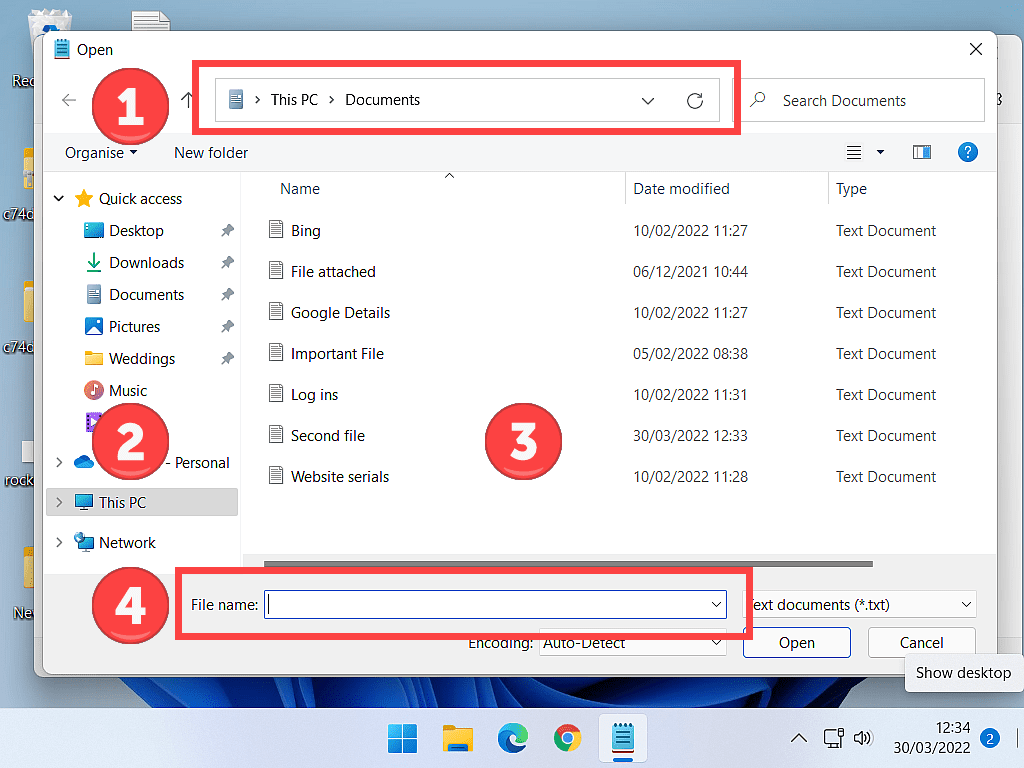
Navigating To Your File.
When you’re saving a file on your computer, you’d normally go by name and location, you name your file first and then locate it (place it into a folder).
When opening a file, it’s the other way around, you need to locate it first (find the folder that it’s in) and then find the file by its name.
To find the file that you want to open, use the navigation panel to select the main folder, or parent folder, where your file is located.
If your file is on your Desktop, click Desktop.
If the file is in the Pictures folder, click Pictures in the Navigation panel.
If the file is in your Documents folder (as it is in this example), click Documents.
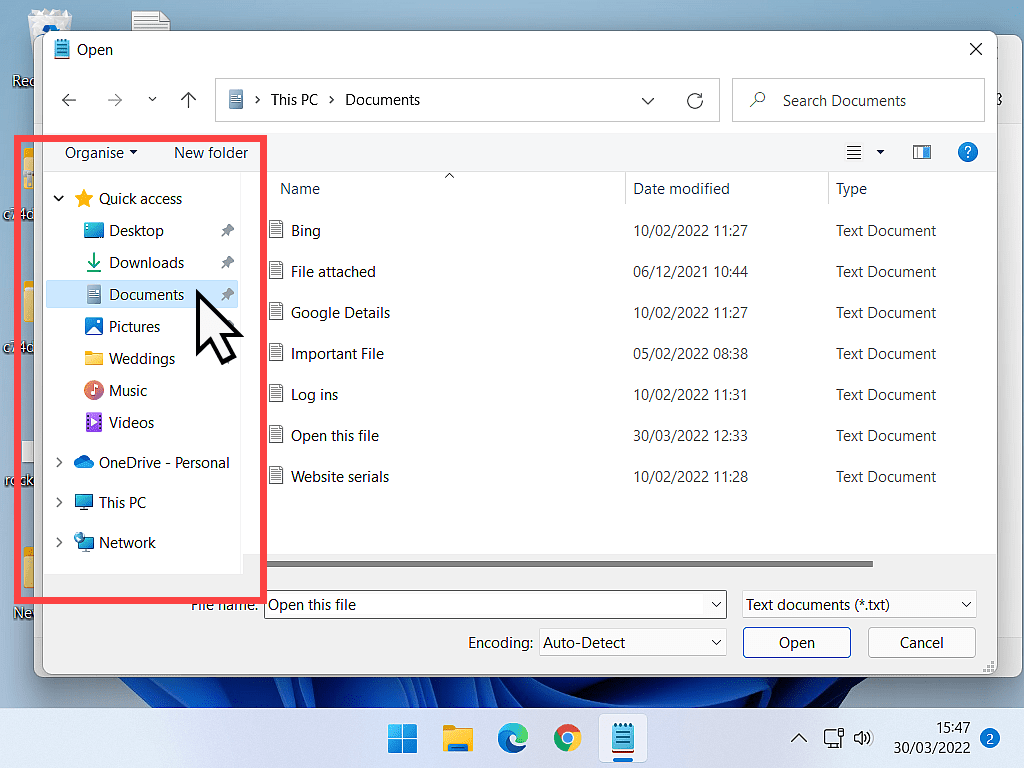
After clicking the parent folder, the centre pane will show the contents of whichever folder you clicked.
If your file is inside one of the subfolders, then double left click on the subfolder to open it.
Once you’ve found the file that you want, either left-click on it once to select it and then click the OPEN button, or double left-click on it.
The file will then appear inside your program or app.
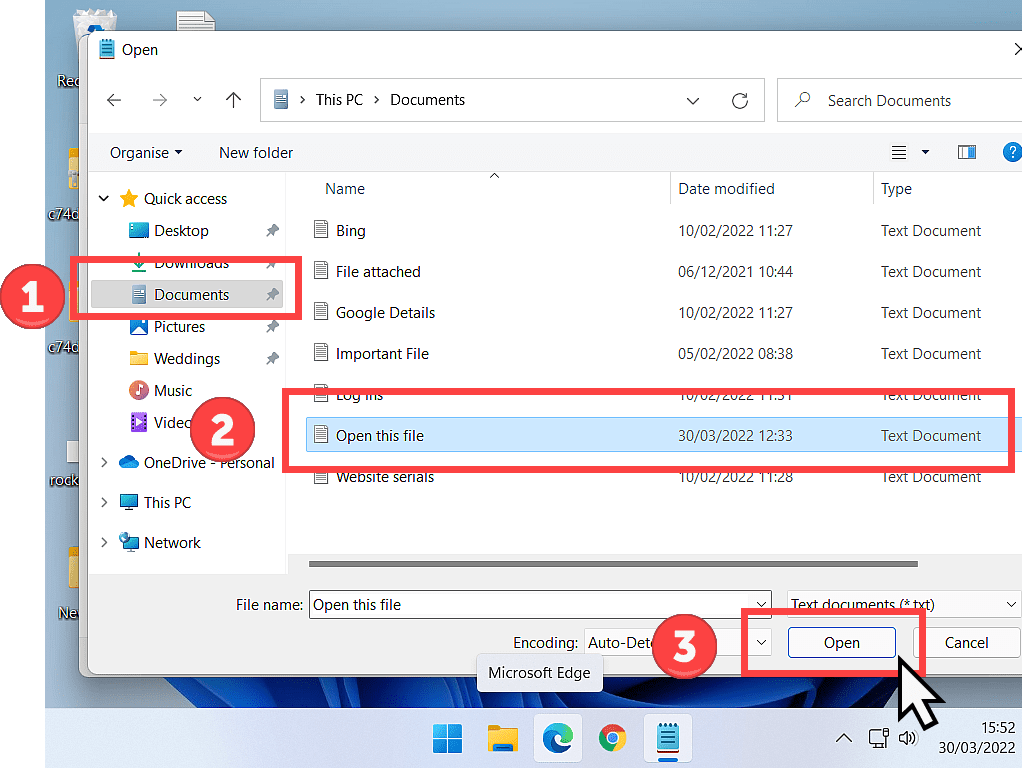
Summary.
Opening files on your computer isn’t difficult once you get the hang of using Windows File Explorer. Navigating quickly around all the various folders is the tricky part.
But it is easier if you’ve named your folders properly. Having descriptive names for the folders that you create really does pay dividends when you’re trying to find a file that you last used perhaps a year ago. If you missed the folders guide you can catch it here
At Home Computer Guides.
These easy to follow guides aren’t part of the course, rather, they are standalone guides. They extend beyond the basics that we’re covering on the course.

